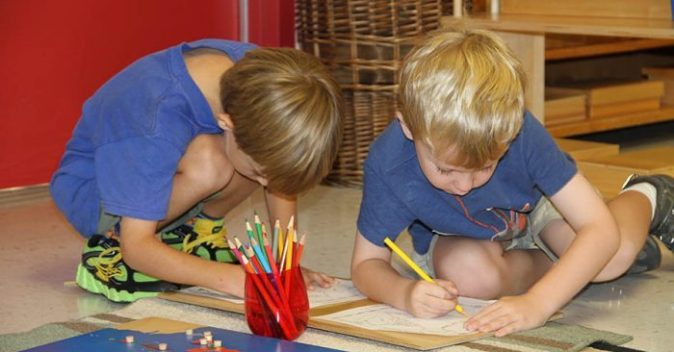6 Montessori Parenting abits to Practice Every Day
Here’s what you can do at home, today!
Living the Montessori philosophy at home with children can seem daunting. Educators get dedicated training in this curriculum, after all, so you might ask yourself, “How could I possibly use this philosophy at home if I don’t have a special degree?”
While it’s true that educators need to have a well-rounded and complete understanding of the pedagogy to run a classroom, there are some things you can do at home without years and years of study.
To help you get started, here are six elements of Montessori philosophy that anyone can use while interacting with children.
1. Respect your child as a person
We respect our elders, we respect our partners, but the thought of respecting children seems a bit strange at first. After all, they are still new to this world! But that’s all the more reason to show children respect in daily interactions. They will feel heard, they will feel loved, and they will learn how to respect others through your example.
Example: If your child wants your attention, but you ask them to wait a moment, make sure you turn to them when you’ve finished your task. Say, “Thank you for waiting, what can I help you with?” This shows them you respect what they have to say.
2. Foster your child’s freedom and independence
When one cares deeply about a child or family member, it’s difficult to watch them struggle—we want to step in to help! But this isn’t always helpful in a child’s learning process, their self-confidence and their intrinsic motivation.
Most materials in the Montessori classroom are designed to allow children to use them independently, including the kitchen and bathroom areas. Children love the fact that they have control and independence over basic tasks like washing their hands or using the toilet!
At home, look for areas where you can give your child freedom. Maybe a low snack shelf that is all their own? Lower coat hooks so they can reach?
Example: Let your child dress themselves. It might take longer, and the clothes might be mismatched, but in the end, they are learning fine motor skills, step-by-step logic and decision making.
3. Give them freedom—within limits
A delicate Montessori concept, freedom within limits means letting your child guide their own daily activities based on their interests. However, setting limits is important as they help your child understand what is and isn’t acceptable. Any activity that hurts themselves or others would be an example of when to set limits.
Example: At the park, let your child decide how they would like to play. Set some limits before you go, “It’s not okay (it’s unsafe) to go outside of the fence onto the busy road.”
4. Slow down—and give them space
An element of the Montessori philosophy that you can use at home is giving your child ample time and space to explore. Children run on a different internal clock than grown-ups, and it can be difficult to take a step back to appreciate that. Make sure you consider your child when making your daily schedule!
Example: Rather than rushing through a trip to the library, leave enough time for your child to explore the books on the shelves or ask the librarian questions.
5. Use big words—even with little kids
Using “big words” isn’t exclusively a Montessori concept, but it is implemented daily in the classroom. Most first-time observers of a classroom are surprised when they hear the teacher announce, “I see some debris on the floor that needs to be picked up before lunchtime!”
You can start incorporating new language at home. Children will pick up the definition of new words through contextual clues or by asking you, “What does that mean?” Very soon your child will be using rich and descriptive language in everyday life.
Example: Don’t censor your language. If a fire truck is really big, try using words like “enormous,” “gigantic” or “impressive” to describe it.
6. Always be making observations of your child
Finally, here’s a Montessori reminder for moms and dads to take the time to observe your child. In the classroom, educators spend a lot of time watching how children interact with materials in the classroom and with one another. This information gives the teacher insights into the unique and intricate character of each child.
Example: Watch your child when they are playing by themselves. Observe what gives them true joy, what frustrates them or what they tire of easily. Cater your activities at home based on your child’s preferences.
While the Montessori curriculum is best left to a school environment, that doesn’t mean you can’t use some elements of the philosophy at home. By using some of the tips above like respect, independence and observation, you’ll be able to create a caring and supportive environment that will contribute to the happiness of the whole family.
Written by: Angie Heck https://www.mother.ly/child/6-key-ways-to-be-montessori-with-your-kids-every-day

